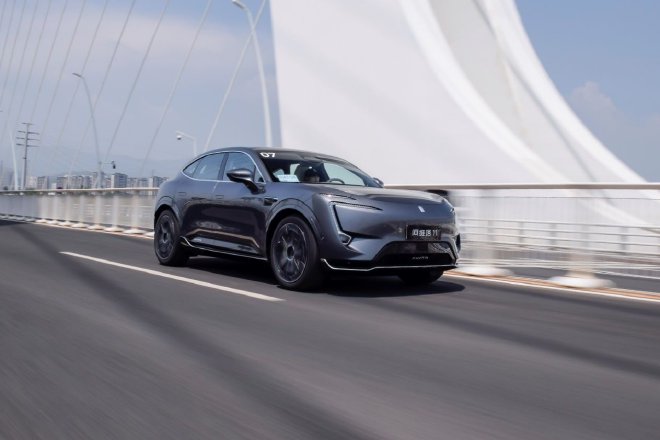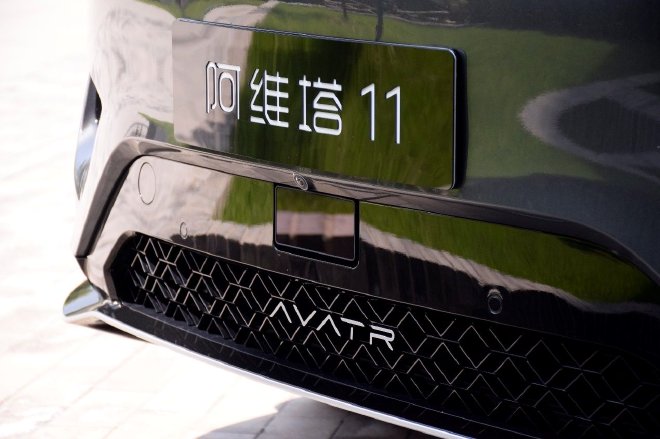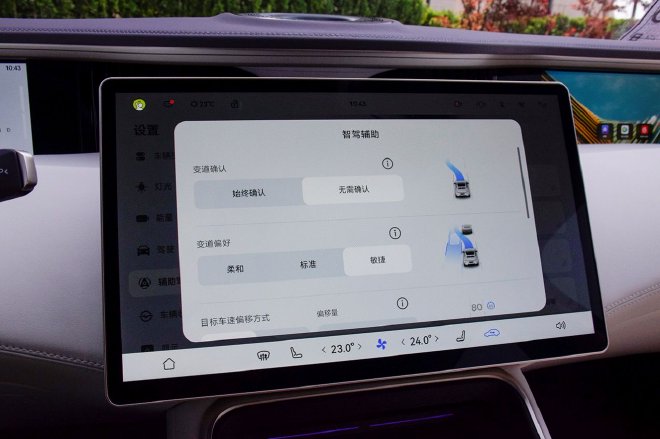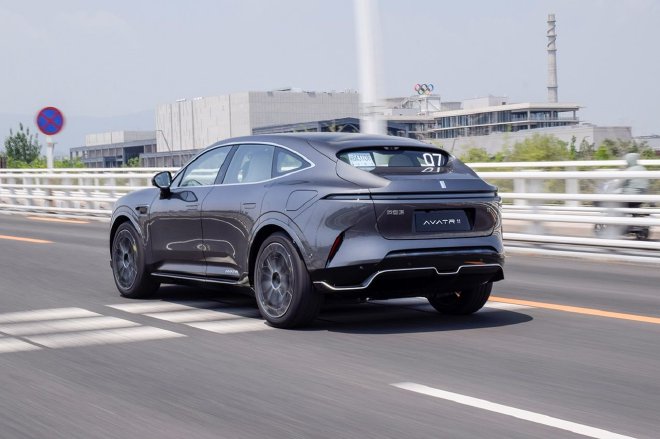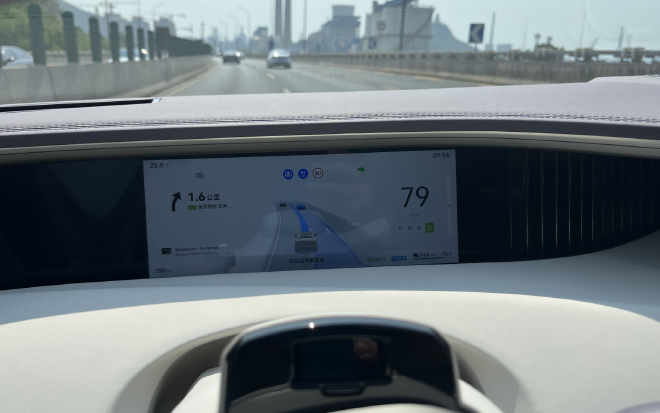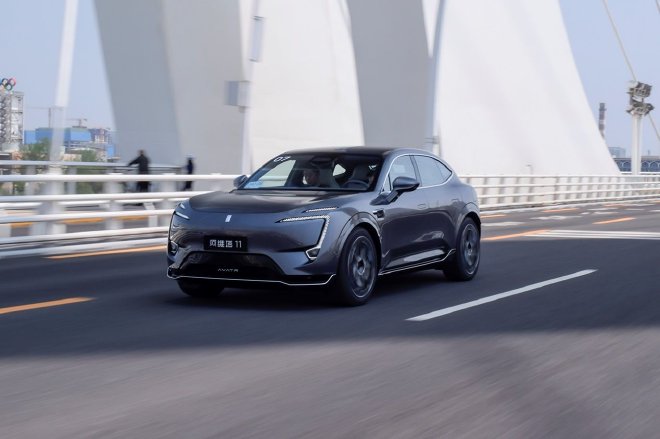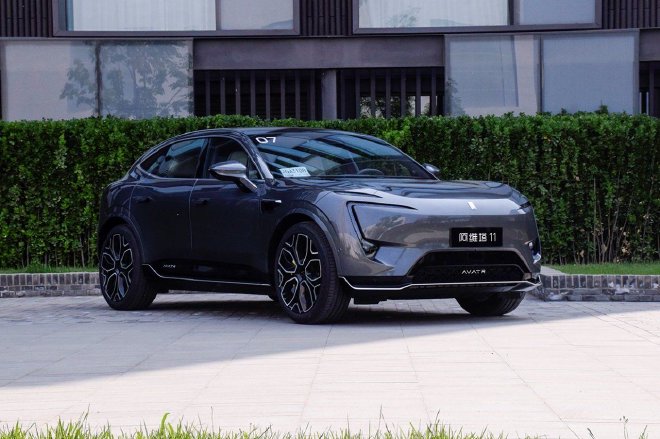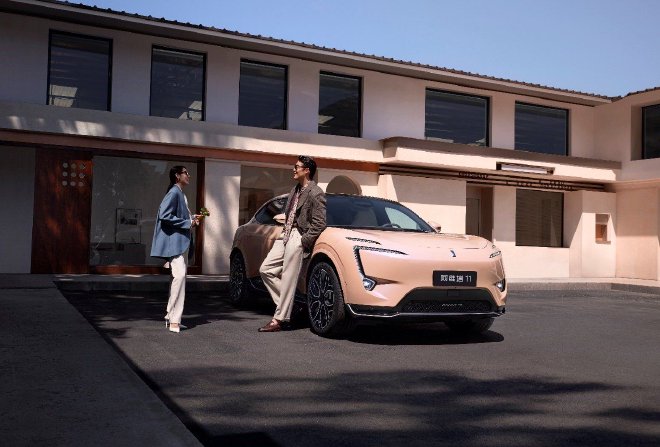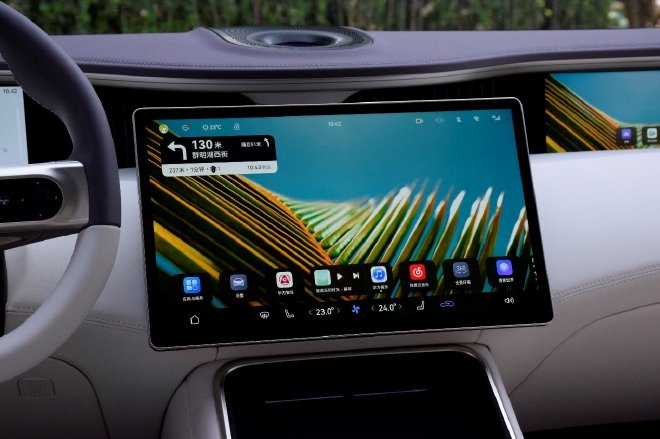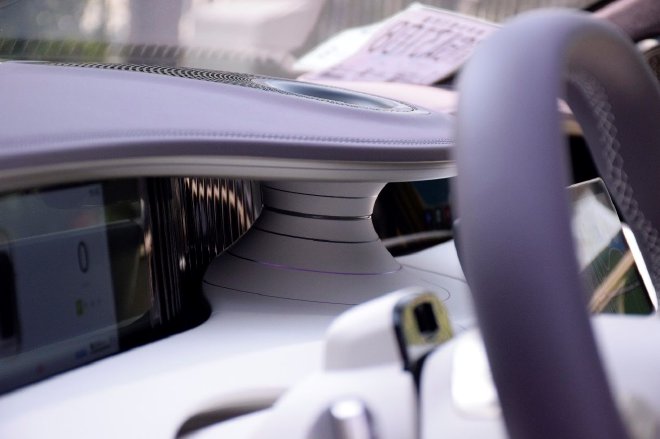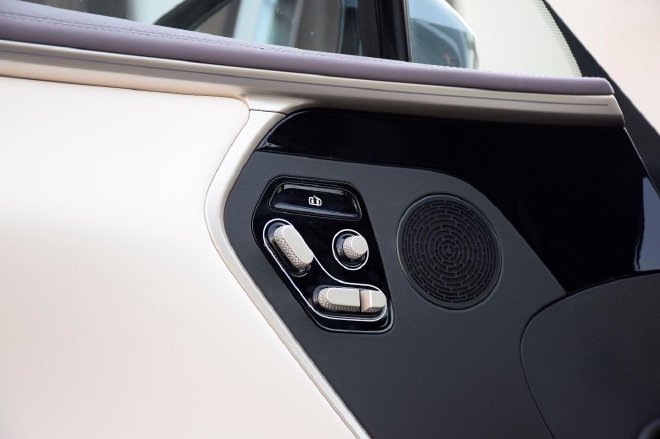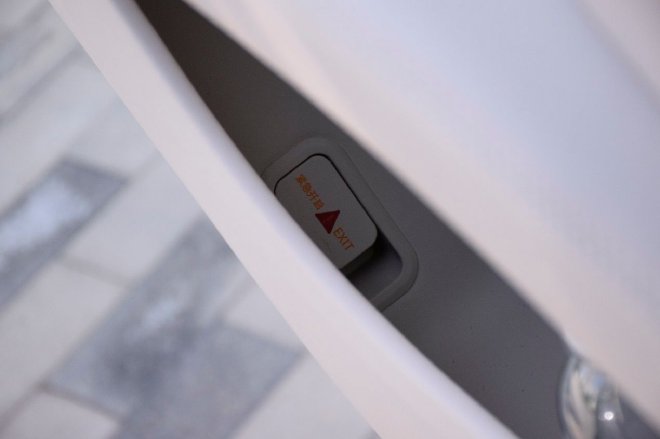At the just concluded 2024 Beijing International Auto Show, the 2024 Avita 11 was officially launched. The new car, as an annual update, did not see much change in price, with a price range of 30.08-39.08 million yuan for the 2024 model, an increase of 800 yuan (110$) compared to the 2023 model. However, in exchange for that increase, the car received multiple upgrades, including new body colors, new interior themes, various comfort configurations, and is equipped with Huawei Intelligent Driving ADS 2.0.
The test drive car this time is the 2024 model 730 Three-Laser Rear-wheel Drive Luxury Edition. The hardware for assisted driving has not changed – 34 intelligent driving sensors, including 3 solid-state laser radars, 12 ultrasonic radars, 6 millimeter-wave radars, and 13 cameras. The main change is in the software. In the intelligent era, hardware determines the limit, and the role of software is to constantly approach the limit of hardware.
Test drive route located inside Beijing Shougang Park and nearby roads, road conditions are quite complex. The editor immediately activated the driving assistance function upon getting in the car, the operation is to shift down twice to activate. Firstly, it must be said that now this ADS 2.0 no longer relies on high-precision maps, which means that, in addition to many rural roads and county roads, areas not covered by high-precision maps, such as within the Fifth Ring Road in Beijing, can also use the navigation assistance function.
Lane change preference can be set by yourself, the editor chose “agile”. First of all, the overall performance is good, especially in urban road conditions. The vehicle’s recognition of lane lines, vehicles, pedestrians, and even bicycles is very accurate. In “agile” mode, the vehicle’s control of acceleration and deceleration is not considered sluggish. Objectively speaking, it is more nimble than most road drivers.
Another point is the inherent rules and conservatism of this auxiliary system, for example, when turning right and encountering oncoming vehicles from the left side, the left lane is for straight driving while the right lane is for turning right. If both vehicles drive normally, they won’t intersect, but the vehicles will still slow down or even stop. Another point that impressed the editor deeply is encountering a fork in the road with left and right turn lanes within the Shougang Park. The navigation assistance map indicates a left turn, but it follows the lane to the right turn lane, causing the left turn to fail. However, the vehicle has a self-learning function. As users use this system more, it will become more familiar with frequently traveled roads and become more skilled naturally.
The following editor also experienced the high-speed road conditions. In this scenario, the style of this ADS 2.0 system needs to be more “experienced”. The acceleration and braking actions are linear and efficient. The driving style is not aggressive. During the journey of over ten kilometers, lane changes were successful, with the system accelerating and maintaining distance from other vehicles. The LCD instrument panel also displayed the upcoming lane to be entered.
On the highway, encountered construction, system can accurately identify construction site, cones and other obstacles, and take corresponding evasive action. Overall, this ADS 2.0 is usable in urban areas, efficient on highways, even outperforming many drivers – in terms of steering control, acceleration, and braking. Its performance in urban areas may make some people uncomfortable, but many times it’s not the system’s fault, but rather experienced drivers are used to “unruly” operations, like running red lights, changing lanes without signaling, not yielding to oncoming vehicles, Avita 11 won’t do that.
Powertrain and chassis remain unchanged compared to the 2023 model. Overall, it is a style that focuses on quality. The chassis is solid and has a certain sense of weight. The power reserve is not a concern. The model experienced by the editor this time is the single-motor rear-wheel drive version, with a 6.9-second acceleration from 0 to 100 kilometers per hour. Luxury experience goes further.
The appearance of the Avita 11 has not changed much since its initial release. The design still looks elegant and avant-garde even after two years.
The new color is called “Huijin”, but the editor did not get the car, so let’s use the official pictures to show everyone. According to the official description: Huijin color uses a pigment called “chameleon effect”, different gloss during the day and night, cloudy or sunny, the color will change from different angles, and the color production process is extremely complex, the texture is really great, should be loved by many female users.
Dimensions unchanged, 4880×1970×1601mm, wheelbase 2975mm, standard size, dynamic design. Rear styling distinctive, SUV type, cargo and passenger compartments separated, better NVH, luxury, small rear window.
The interior design is artistic, with clear layers and plenty of curved lines. It features a full LCD instrument panel, a floating central control screen, and a passenger entertainment screen. The main focus is on the elegant feeling conveyed by the overall design, rather than the multiple screens.
The central control screen size is 15.6 inches, built-in HarmonyOS system, the system editor has experienced many times, smoothness is excellent, application ecology is strong enough, definitely first-tier performance.
The main change is the interior color scheme, with soft purple used on the upper dashboard, door panels, pillars, and headliner. The white inside is a smoky white, with a great texture. Many new luxury consumers like this light color scheme, which looks good. The only concern is the difficulty of maintaining it in daily use, as light colors are usually not very dirt-resistant.
The focus of the upgrade is on the seats. The 2024 models are all equipped with front dual zero-gravity seats. The cushions, backrests, and leg rests can be adjusted at multiple angles. When flattened, the body can be in the most even state of force, making it convenient for users to rest while parked. The seat configuration is also very high, with three levels of ventilation, three levels of heating, and seat massage. When the seat is heated, the leg rest, cushion, and backrest can all be heated.
The material of the seats is full-grain semi-aniline leather, which is softer and more comfortable than the previous NAPPA. The front and rear seats of the new model are very comfortable, with soft padding that conforms well to the body and provides good support for long drives.
The test drive vehicle is equipped with electric doors, which is a high-end and rare configuration. However, the user experience is not particularly good. Users need to develop the habit first. Electric doors are not as efficient as traditional physical opening methods. Although the opening and closing speed is not slow, it is still slower than manual operation. Some ultra-luxury models may have this configuration, but the positioning and scenarios are different. The editor believes that most users of the Avita 11 still prefer to drive themselves for daily use, so it is not recommended to choose electric doors.
After choosing the electric door, the position of the mechanical switch is awkward, located inside the lower storage compartment of the door panel, making it very inconvenient to use. The editor personally suggests that in order to popularize this configuration, the physical opening mechanism inside the car should be placed in a more convenient position, giving users the right to choose. Finally: the Avita 11 is a highly designed and artistic electric car, and a rare choice in the same level of SUVs that perfectly combines dynamism and elegance. The 2024 model emphasizes enhanced comfort features and interior materials, combined with the more advanced ADS 2.0, which to some extent enhances its product power.
